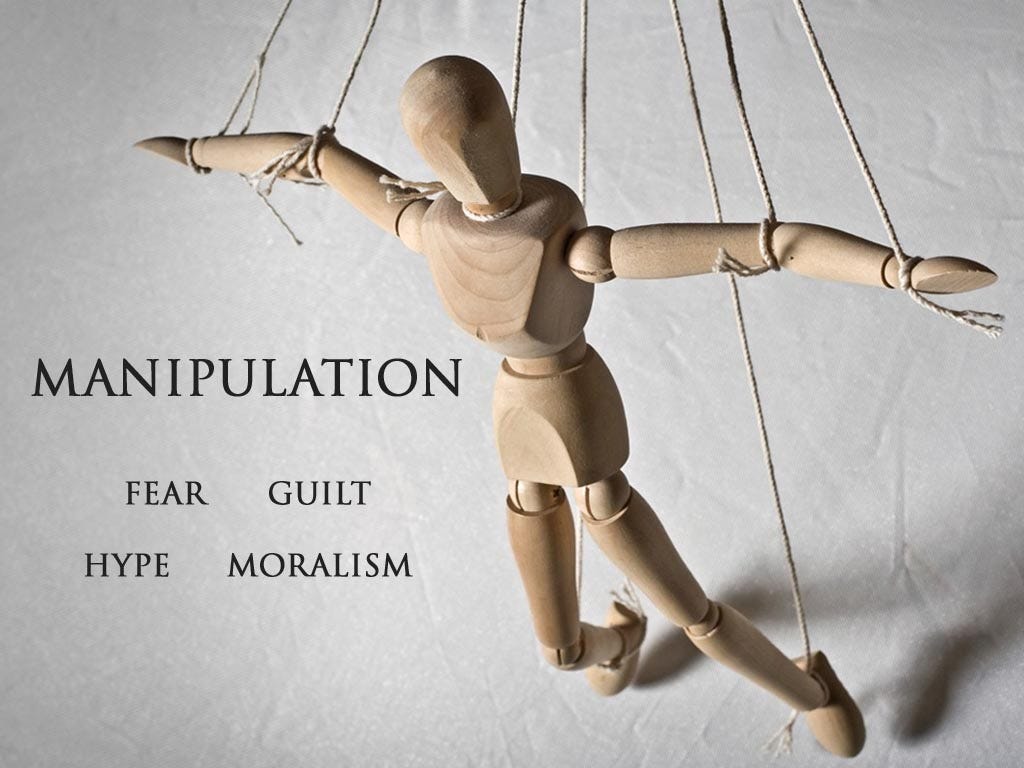How Workplace FOG Impacts ESG
When workplace FOG - Fear, Obligation, and Guilt - is introduced into the culture, it becomes a slow burn of toxicity and legal landmines.
In recent years, corporate social responsibility has evolved into a broader, more human-centric lens—Environmental, Social, and Governance (ESG). While environmental impact and board diversity still dominate headlines, there's an often-overlooked toxin poisoning workplace cultures across sectors: FOG—Fear, Obligation, and Guilt.
This invisible smog isn't an external pollutant. It's psychological. It lives in office hallways, Slack threads, corner offices, and Zoom calls. It's not listed in earnings reports or risk disclosures, but it is a silent saboteur of productivity, employee well-being, and ethical governance. FOG is a tool—often wielded subtly by managers, executives, or toxic peers—to manipulate behavior, enforce compliance, and suppress dissent.
This is the ESG story behind FOG: how it festers, why it persists, and what it costs the modern workplace.
What Is FOG?
FOG is an emotional manipulation framework built around Fear, Obligation, and Guilt. The concept is frequently cited in psychology to describe how narcissists or abusive personalities control others. In a corporate setting, FOG becomes a tool to coerce employees into overworking, under-reporting abuse, or staying silent during ethical lapses.
Fear – “If I don’t agree, I might get fired or demoted.”
Obligation – “They did so much for me; I owe them my loyalty.”
Guilt – “If I leave now, I’m letting the team down.”
When woven into workplace norms, FOG distorts boundaries, inflates workloads, and fosters toxic loyalty.
Who Uses FOG—And How?
FOG is most often employed by individuals in positions of power—CEOs, department heads, team leads, or even HR professionals. Its application isn’t always malicious; sometimes it’s cultural, unexamined, or inherited through generations of outdated leadership models. Regardless of intent, the outcome is predictable: an unhealthy dynamic that subordinates the employee’s mental health to the company’s perceived short-term goals.
Common Techniques Include:
Fear: Implicit threats about job security or career stagnation. For example, a manager might say, “People who speak up usually aren’t team players,” or “We’re trimming teams next quarter—just a heads-up.”
Obligation: Leveraging past favors or company perks to create emotional debt. Think: “We paid for your relocation,” or “After everything this company has done for you...”
Guilt: Framing normal boundaries as betrayals. “I can’t believe you’re leaving early with everything going on,” or “Taking time off now would really hurt the team.”
These tactics stifle transparency, discourage whistleblowing, and normalize burnout.
FOG’s Hidden Costs: The ESG Red Flag
From an ESG standpoint, FOG violates all three pillars:
Environmental: Burned-out employees are less likely to engage in sustainable practices or innovate toward green solutions. Workplace stress correlates with resource waste and absenteeism.
Social: FOG undermines psychological safety, equity, and inclusion. It creates fear-based cultures that disproportionately impact women, minorities, and younger employees still learning how to assert boundaries.
Governance: Leaders who use FOG create blind spots. Ethical lapses go unreported. Diversity programs become performative. A culture of silence takes root.
The illusion of a productive team masks a deeper reality: disengagement, ethical erosion, and legal risk.
The Mental Health Fallout
Mental health professionals have long warned about the impact of emotional manipulation in relationships. In the workplace, the consequences mirror clinical abuse patterns—just repackaged in an office setting.
Conditions Linked to FOG Include:
Chronic Anxiety: Employees constantly fear disappointing a superior or facing retaliation.
Burnout: Long hours driven by guilt and obligation lead to exhaustion and reduced capacity.
Depression: Internalizing FOG’s messaging can make employees feel worthless or trapped.
Imposter Syndrome: Guilt-fueled perfectionism creates a cycle of self-doubt and overcompensation.
Learned Helplessness: Repeated exposure to FOG conditions employees to believe they have no agency, even in unsafe or unethical situations.
This isn’t just personal damage—it’s organizational liability. Mental health crises cost U.S. employers over $300 billion annually in absenteeism, turnover, and lost productivity.
FOG in Action: Real-World Examples
The Tech Startup That Never Slept: A well-known tech startup celebrated its "family-like" culture—until engineers began resigning en masse. Internal reports revealed they were expected to work weekends "for the vision," and anyone who declined was guilted for “not believing in the mission.”
The Nonprofit with a Narcissist Leader: A nationally recognized nonprofit used employee passion as a weapon. Workers were told that “children’s lives depend on your sacrifice,” even as leadership took lavish retreats. When whistleblowers raised concerns, they were framed as disloyal and ousted.
The Oil & Gas Giant with PR-Polished Tyranny: In an ESG report, the company highlighted mental health initiatives. Yet internally, managers threatened to blacklist workers who didn’t “volunteer” for unpaid safety task forces. Fear over job security kept most silent.
These stories aren’t rare. They’re just rarely told.
Breaking the FOG: From Exploitation to Empowerment
Combatting FOG isn’t just an HR issue—it’s a governance imperative and a social responsibility.
Steps Organizations Can Take:
Audit Leadership Communication: Regularly review how messages are delivered and received. Fear-based language should be flagged.
Empower Whistleblowing and Feedback Loops: Anonymous feedback mechanisms and whistleblower protections create space for truth-telling.
Train Managers on Emotional Intelligence: Develop leaders who motivate through respect, not manipulation.
Normalize Boundary-Setting: Build policies and cultures that celebrate healthy work-life balance and saying “no” when necessary.
Tie ESG Metrics to Culture Health: Evaluate internal communications and psychological safety as ESG indicators—not soft, but structural.
Final Thoughts: ESG Means Protecting People, Not Just Profits
FOG thrives in the shadows—where performance is prioritized over well-being, and loyalty is demanded rather than earned. ESG frameworks, when applied with integrity, shine a light on those shadows. They remind us that the “S” in ESG is not about slogans or social media campaigns. It’s about people. And people are not just cogs in a machine or data points in a dashboard. They are humans—with limits, values, and the right to work free from manipulation.
When we clear the FOG, what emerges is not just a healthier workplace—it’s a more ethical one.
Jason Spiess is an multi-award-winning journalist, entrepreneur, producer and content consultant. Spiess, who began working in the media at age 10, has over 35 years of media experience in broadcasting, journalism, reporting and principal ownership in media companies. Spiess is currently the host of several newsmagazine programs that air across a 22 radio stations and podcasts worldwide through podcast platforms, as well as a combined Substack and social media audience of over 500K followers.








